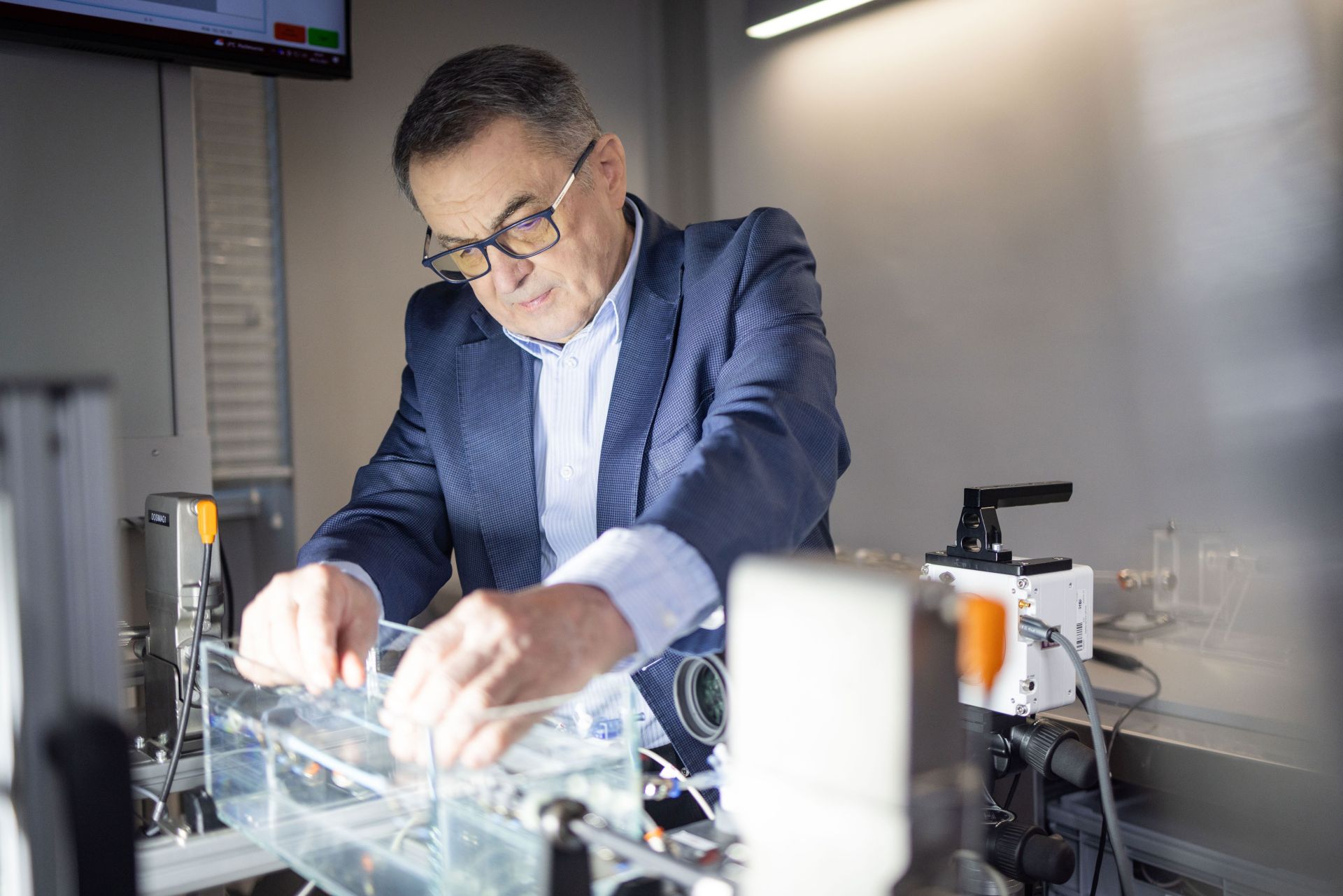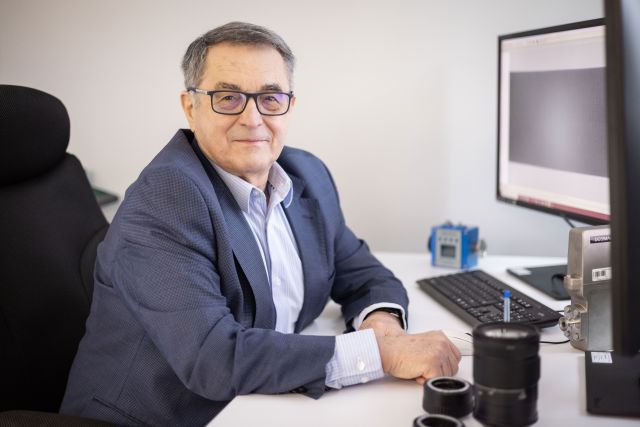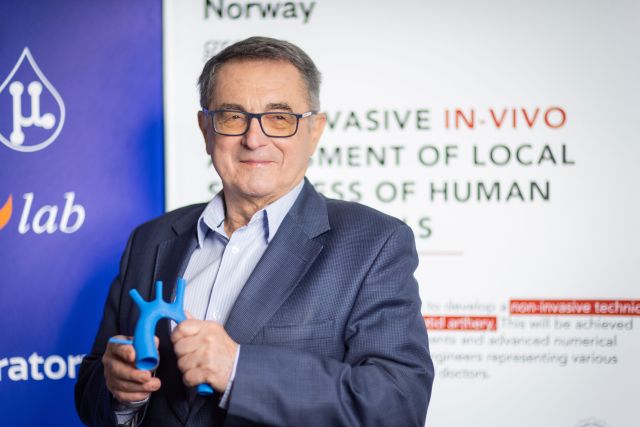Principal Investigator
:
Prof. Dr hab. inż. Ryszard Białecki
Silesian University of Technology
Panel: ST8
Funding scheme
: GRIEG
announced on
17 June 2019
The project focuses on the non-invasive measurement of arterial stiffness. The walls of healthy arteries are very flexible and their cross-section changes under the pressure produced by the heart. With age or due to illness, arterial walls change causing loss of elasticity. Elastin fibers, the main building block of arterial walls responsible for their elasticity, are replaced by less elastic collagen fibers, whereby arterial walls lose their elasticity. Furthermore, arterial walls thicken thus reducing their susceptibility to blood pressure changes in the arteries.
 Prof. Ryszard Białecki, photo by Michał Łepecki
Arterial stiffness may have many adverse effects. It can be a symptom of certain kidney diseases, hypertension, diabetes, and atrial fibrillation. As a result of decreased absorption of energy of the pressure wave generated by the contraction of the left ventricle of the heart, the wave reaches delicate tissues of organs, such as the brain and kidneys, causing their mechanical destruction. Furthermore, the increased velocity of the pressure wave in rigid vessels , whereby the wave generated by the ventricle and the wave reflected from arterial branches overlap, causing hypertension. Whereas increased blood flow resistance in rigid vessels can cause left ventricle hypertrophy.
Prof. Ryszard Białecki, photo by Michał Łepecki
Arterial stiffness may have many adverse effects. It can be a symptom of certain kidney diseases, hypertension, diabetes, and atrial fibrillation. As a result of decreased absorption of energy of the pressure wave generated by the contraction of the left ventricle of the heart, the wave reaches delicate tissues of organs, such as the brain and kidneys, causing their mechanical destruction. Furthermore, the increased velocity of the pressure wave in rigid vessels , whereby the wave generated by the ventricle and the wave reflected from arterial branches overlap, causing hypertension. Whereas increased blood flow resistance in rigid vessels can cause left ventricle hypertrophy.
Assessment of arterial stiffness is a valuable diagnostic indicator with a significant prognostic value in cardiovascular diseases. So far, arterial stiffness has been measured by estimating the pressure wave velocity in the blood vessels, whereby average stiffness values can be determined between distant points in the human body, for example between the carotid and femoral arteries. Many diseases change the local stiffness that cannot be detected by standard methods.
The project seeks to determine the local stiffness of any part of the carotid artery by an ultrasound scan of its wall deformation during the cardiac cycle. Clinical trials follow experiments using a phantom made specifically for that purpose. The key element of the phantom is a flexible conduit of specific stiffness deformed due to cyclic pressure changes. The purpose of the measurement is to evaluate the accuracy of vessel deformation measurement with an ultrasound scanner on the one hand, and to validate the stiffness determination method on the other. In the clinical part of the project, an electronically transformed image of changes in the carotid artery diameter is combined with the local blood pressure measurement and measurement of the rate at which the blood flows. The data set is then entered into the model of changes in the blood vessel diameter. Material properties of the wall that determine its rigidity are unknown in the model. The parameters are determined by successive approximation methods by way of special stabilization techniques to ensure convergence of the process.
Project title: Non-invasive in-vivo assessment of local stiffness of human artery walls
Prof. Dr hab. inż. Ryszard Białecki
Prof. Białecki is affiliated with the Silesian University of Technology (SUT), Gliwice, Poland.
The thrust of his research is in thermofluids in industrial processes and biomedical engineering. He was a Fulbright Commission fellow in the USA and spent 3.5 years as a research fellow at the Erlangen-Nuremberg University in Germany. He is a corresponding member of the Polish Academy of Sciences.
He has coordinated two international research projects within the EU Framework Programs, was a local coordinator of three other projects and principal investigator in a number of projects funded by Polish agencies.
Prof. Białecki has published over 100 articles citated more than 1800 times, with the Hirsch-index factor of 23 (Scopus). He has authored one UK-published book and chapters in Wiley and Springer encyclopedias.


